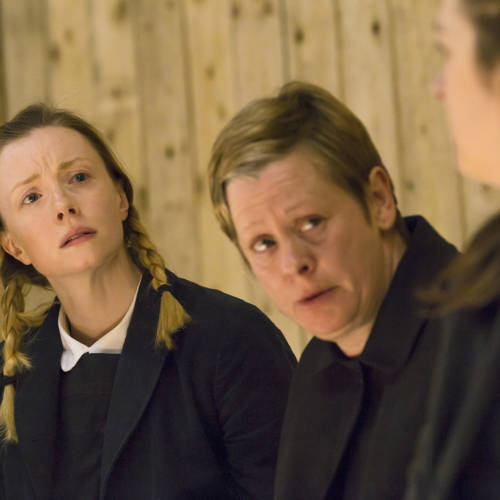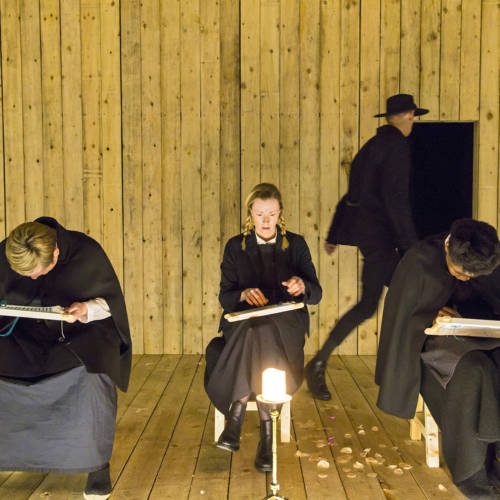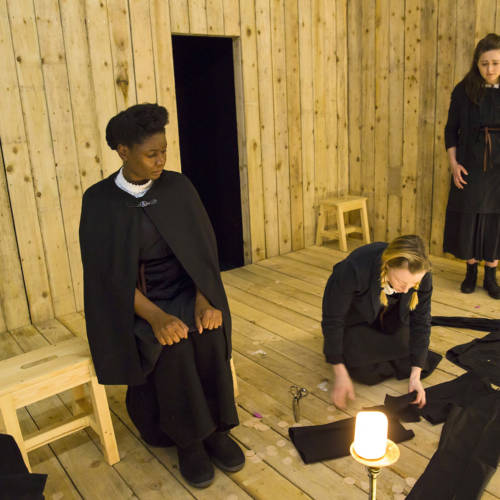E.V. Crowe’s The Sewing Group at the Royal Court
Guest Theatre Review by Liz Hoggard
oiujkl
Having actors sew on stage is a bold statement for a playwright. Last year London’s Southwark Playhouse staged Michael Hastings’ The Cutting of The Cloth, set in a 1950s Saville Row tailor, where the cast literally made suits on stage. It was incredibly moving that, by the end of the show, they’d produced a series of garments.
oiujkl

And now we have E.V. Crowe’s The Sewing Group at the Royal Court, set in rural England in the 1700s. Daringly the play opens with a rapid succession of short scenes showing Shaker-style women, in a windowless wood-panelled room, embroidering lace by candlelight.
The 80-minute play looks at the dynamic between the group of sewers. A and B (no one has full names) exist in a tranquil, meditative state.
oiujkl
[embed]https://www.youtube.com/watch?v=ucGvZDllFek[/embed]
There are extended silences as they dip their needles into their hand-held sewing frames. You’re dazzled by the quiet choreography of stitching. And the play’s director took it very seriously. He and the actors spent 90 minutes each day sewing before rehearsals, learning how to pace their lines around the ‘pop’ sounds of the stitching. The Royal Court even employed a sewing consultant, Ruth de Courcy, and the actors now have favourite stitches, including ‘whipping’ during the quilting scenes.
It shows an admirable attention to detail. But The Sewing Group is anything but a conventional historical drama. The arrival of a newcomer, C, gradually disrupts the group. She has striking ideas for new designs - double-stitched in red, not teal - and is very goal-orientated. Is this a metaphor for the questing artist?

Later when D’s husband dies, the dynamic C invents a quilt design made from his old clothes. She encourages all the villagers to make personal quilts of their stories. Decoration isn’t enough, she insists: ‘There’s no point in just making quilts. They have to serve the village. They have to DO something.’ But she also uses clues found on the quilts (grass stains, body fluids, mistakes, wonky lines) to pass judgment and ‘categorise’ members of the community. Is this turning into Arthur Miller’s The Crucible?

Gradually the hermetic female world is revealed to be more complex, as the play asks questions about our nostalgia for the pre-industrial past. We may long to stop the clock, embrace a kinder world of community and craftsmanship, but how much of this is a fantasy?
There’s a brilliant twist at the end of the play. And yet the vision of those women quietly stitching lingers in the brain. All credit to Crowe for having the vision to put sewing centre stage.
http
The Sewing Group is at the Jerwood Theatre Upstairs, Royal Court, London, until 22 December.
http

1 comment
The’res nothing like the relief of finding what you’re looking for.